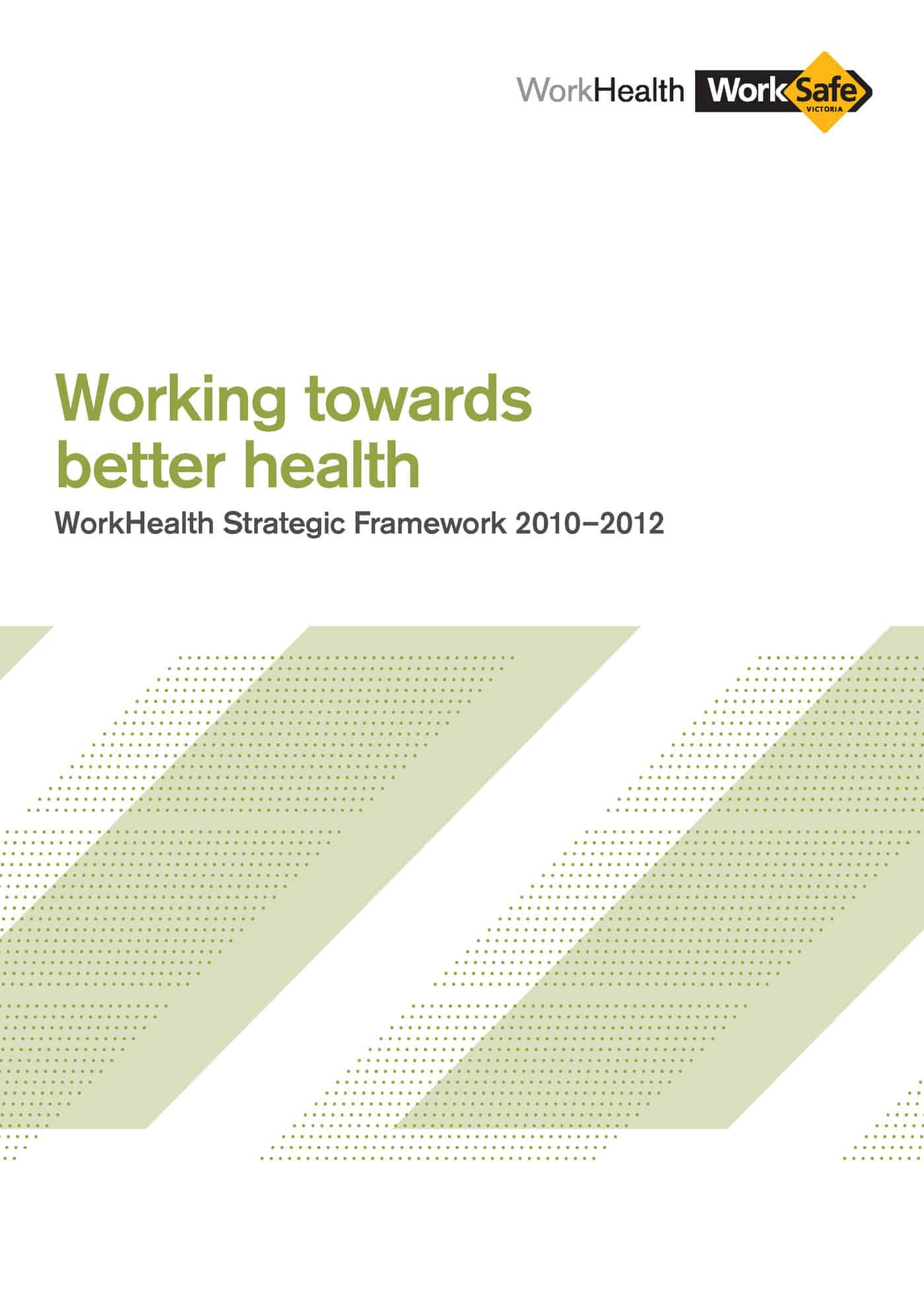The Victorian Workcover Authority’s (VWA) WorkHealth program is coming to the end of its five-year life. But what is the way forward? Has the $A600 million program achieved its aims?
Aims and Results
VWA’s annual report for 2008 (page 33) stated the following aims for WorkHealth, reiterated in the WorkHealth Strategic Framework 2010-12 (page 1):
“Over the long term, the program aims to:
- cut the proportion of workers at risk of developing chronic disease by 10%
- cut workplace injuries and disease by 5%, putting downward pressure on premiums
- cut absenteeism by 10%.
These goals aim to drive productivity and reduce health expenditure that is associated with chronic disease.”
None of VWA’s annual reports since 2008 have included any mention of these benchmarks. Instead, they have focused on the level of activity of the program and not its results. For instance the 2010 annual report states:
“Results from the first 100,000 checks showed that 40 per cent of participating workers had a high or very high risk of developing type 2 diabetes and cardiovascular disease.
The checks also found:
- 832 Victorian workers were at very high risk and were advised to see a doctor within 24 hours
- 93 per cent of workers eat less than the daily recommended intake of fruit and vegetables
- 73 per cent of workers reported inadequate exercise.” (page 12)
 These figures are interesting but fail to provide any assessment against the initial program’s performance criteria. Curiously all of the activity indicators are percentages except for the 832 workers at “a very high risk”. As a percentage, 832 equals 0.832 of workers checked – important for the 832 workers but minimal in the whole project. And the 832 were only advised to see a doctor. The WorkHealth project would have more validity if behavioural and health changes had been made by those workers assessed but so far that evidence is missing.
These figures are interesting but fail to provide any assessment against the initial program’s performance criteria. Curiously all of the activity indicators are percentages except for the 832 workers at “a very high risk”. As a percentage, 832 equals 0.832 of workers checked – important for the 832 workers but minimal in the whole project. And the 832 were only advised to see a doctor. The WorkHealth project would have more validity if behavioural and health changes had been made by those workers assessed but so far that evidence is missing.
WorkHealth and Politics
A challenge for the current Victorian Government is that it was critical of the WorkHealth program and in 2010 the (now) Minister for WorkCover, Assistant Treasurer Gordon Rich-Phillips said
“Even if this ill-advised project were possible, it’s questionable whether the $600 million project would provide value for money”
In 2009, Rich-Phillips, in discussing other WorkCover scheme changes, said:
“The changes announced today come on top of the expensive and failed WorkHealth scheme funded through WorkCover, which despite costing $218 million has generated little interest in Victorian workplaces.” [emphasis added]
Gordon Rich-Phillips is now responsible for the future of this “ill-advised project”.
WorkSafe has stated that
“a full review of the delivery, impacts and results of the program will be conducted in the latter part of 2012/13.” (page 11)
The Institute for Safety, Compensation and Recovery Research (ISCRR) has been commissioned to undertake such a review. ISCRR is a joint initiative of three organisations one of which is WorkSafe Victoria.
WorkHealth Future
There is some industry speculation that WorkHealth may continue, or morph, into a program encompassing psychosocial health hazards, such as fatigue, stress and workplace mental health. Any change announced without a detailed assessment of the previous program would be a major error.
WorkHealth has stated that it has evaluation methods that
“… include feedback from employers, workers and service providers on their experience with WorkHealth through a range of surveillance activities, as well as independent measurement as to changes in workers’ health and healthy behaviours in the workplace.” (page 7 of Strategic Framework)
There is no doubt that the basis for some sort of action on chronic illness and disease is warranted. WorkHealth’s Strategic Framework presents snippets of data and WorkHealth produced a factsheet on national and international evidence of the need for health promotion. What WorkSafe and ISCRR’s review needs to report on is whether this specific type of workplace intervention is an effective in reducing chronic illnesses and their impacts on, as listed by WorkHealth in 2008
- workplace injuries ,
- workplace disease,
- workers’ compensation premiums,
- absenteeism.
- productivity and
- health expenditure.
Anything less would be unhelpful.
WorkSafe, the Victorian Government and other stakeholders have been approached on the issue of WorkHealth. SafetyAtWorkBlog plans to published further articles on the project during its review.

I did the health test. My age and the fact I was on medication was enough to put me into the high risk group?